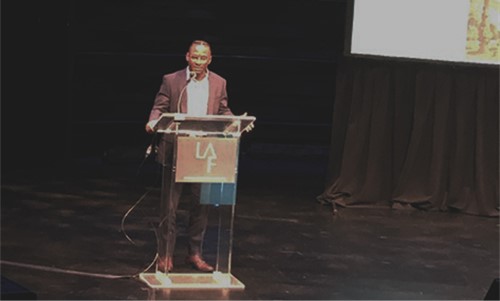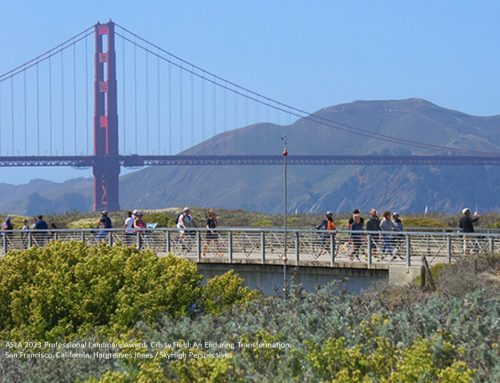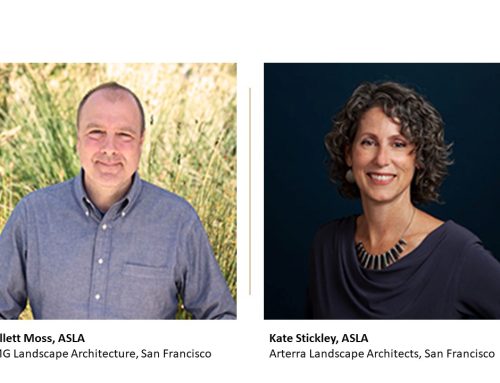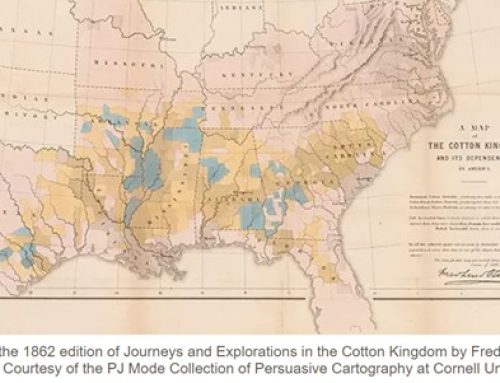by Andrew Sargeant, ASLA
Two days before I saw the footage of Ahmaud Arbery’s murder, I headed out for a quick walk to the local gas station mini-mart. I realized I forgot my mask and returned home to grab it. On my way home, I was greeted with yet another reminder that, as a black man, my movements are constantly policed by everyone.
I was approximately 100 feet from my front door when a pick-up truck with two Latino men approached me. The driver asked me if I was lost. I responded, “No, I’m not lost. Are you lost?” He said “No, I live in the neighborhood. Do you live around here?” At this point, telegraphing my annoyance, I replied “Yeah, man, I live right there,” pointing at my house. “I’m going home because I forgot my mask.” Having successfully checked in with total strangers, I continued home.
Later that day, I mentioned the encounter to my roommate, who is also a black man. Although my retelling was dispassionate, he responded with concern. My roommate wanted us to tell our neighbors because he feared for our safety. He wanted to leverage our social capital for community protection. He wanted what everyone wants — for us to feel safe in our own home. I shrugged off his concern. To my thinking, we lived in Latinx neighborhood and had a great relationship with our immediate neighbors. We were good.
Two days later, I saw the video of Ahmaud Arbery being murdered, chased down and shot by two armed white residents of his neighborhood while out for a jog. The video shook my soul. Arbery and I were about the same age, the same skin color, and enjoyed the same activity. Since the pandemic started, my roommate and I started jogging around our neighborhood at least 3 times a week, usually by ourselves. I just turned 27 years old. Arbery will never have that opportunity because his check in with total strangers didn’t go as well as mine did.
I share this story in hopes that this will be the last time I have to recall these events. I share this story knowing it won’t be.
As landscape architects, we understand that our imagination gives shape to the future. Our creative power manifests in the world and creates change. This same imagination is necessary for the liberation of people, and our role in that liberation.
With the increased global awareness of violent over-policing of black people by officers of the law and citizens governed by unwritten social laws, we are all being pulled into an essential and complicated discourse around race. The people demonstrating in cities across the world are taking us to task. Now is the opportunity to create a new and more just world that has never existed outside our imagination.
We know creating this new world will be hard work. I believe that most of us want to do this work. Yet I recognize there is and always has been opposition from people who benefit from the systemic discrimination against black people or from those who have the privilege to believe that the status quo is not deeply unjust. Even amid the din of protesters taking to the streets demanding justice, I hear the hushed complaints of people wanting to return to the world as it was or at least how we pretended it was. For me, the stakes are high. I have no recourse but to act because my survival depends on it. READ the article on The Dirt
In recent years, ASLA and the Landscape Architecture Foundation made a concerted effort to transform our discipline by making diversity a priority. However, firms have made little progress in diversifying their staff or creating cultures where diversity hiring isn’t seen as a forced obligation.
Black, Latinx, and Asian people working in majority white firms still must subscribe to and endure the predilections of white culture even when designing for diverse users. The compulsory need to change our speech, dress, hair and appearance in order to not disrupt the status quo, amounts to a suppression of our being for 40+ hours a week.
If we are to design a new, more just world, we need to start by designing a new, more just workplace. We need to do the hard work of examining our own bias and recognizing that our colleagues are not truly comfortable, yet are expected to endure the trauma of racism outside of the workplace and racial bias while at work. The first step is to have landscape architecture firms write an informed public statement against racism for the world to see.
Furthermore, I implore you to help create lasting change. No matter what your race, if you are unhappy with your firm’s response to current events or their hiring practice, let them know. Or quit. Choose to work elsewhere and share your perspective with other colleagues and perhaps the world. We must no longer be complicit in helping to advance institutional bias or apathy.
If you are a student and you want a more diverse faculty and student body, petition your school to make lasting change. Consider transferring to a university that has a more diverse curriculum, more diverse perspectives, and more diverse faculty. Surrender your education to professors and institutions who share your values.
We must change the narrative about investing in black landscape architects and other minority designers as “helping them.” Investment in diverse people and communities is investing in the future of the profession. I don’t want “help.”
I want you to recognize that our ideas have the potential to be as influential as our contributions to other aspects of culture. I want you to understand that the culture of our firms, the culture of our educational systems, and the culture of our profession is missing critical perspectives that are essential in building a better future.
White culture has become normative in our work and education. Without a deep and open-minded discussion of that problem, our work will grow stagnant, our imagination will be ill-suited to shape a better future, our creative power will die. We have no recourse but to act. Our survival depends on it.
Andrew Sargeant, ASLA, is a landscape designer and pioneer of design technology in the field of landscape architecture. He is the vice president of The Urban Studio, a Landscape Architecture Foundation (LAF) Olmsted Scholar Fellow, and a part of the ASLA’s Digital Technology PPN Leadership.
The Urban Studio: Expanding how students of color are educated and engaged around design. Our mission is “to advance design thinking for equitable + sustainable urbanism.” Please visit theurbanstudio.org and donate. READ the article on The Dirt
Tagline Box for Emphasis
Your Content Goes Here






